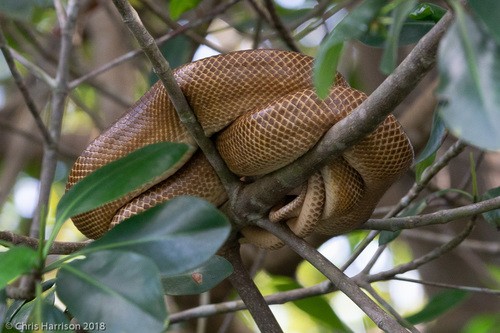Central american tree boa
A species of Neotropical tree boas, Also known as Trinidad tree boa, Ruschenberger tree boa Scientific name : Corallus ruschenbergerii Genus : Neotropical tree boas
Central american tree boa, A species of Neotropical tree boas
Also known as:
Trinidad tree boa, Ruschenberger tree boa
Scientific name: Corallus ruschenbergerii
Genus: Neotropical tree boas
Content
Description General Info
Description
Corallus ruschenbergerii is a nonvenomous boa species endemic to lower Central America and northern South America. No subspecies are currently recognized.
General Info
Lifespan
20-25 years
Diet
Central american tree boa primarily feeds on small mammals, including bats and rodents. It relies on stealth and the element of surprise, often ambushing prey from a hanging position.
Appearance
Central american tree boa is a large, slender snake with smooth and shiny scales. It exhibits a vibrant range of colors, including deep red, orange, pink, and brown, often with patterned markings. This snake is known for its long, forked tongue and prehensile tail, which aids in climbing. There is no significant visual difference between genders or various age groups.
Behavior
Central american tree boa is nocturnal, spending daylight hours in tree branches. Expert ambush predators, they wait motionless in trees to strike unsuspecting prey. Mostly solitary, they solely interact during breeding times. Their behaviors are emblematic of their arboreal, tropical environments, exhibiting vertical pupils adapted for enhanced night vision in dense rainforests. This species displays no remarkable territorial behavior.
Population
Stable
Scientific Classification
Phylum
Chordates Class
Reptiles Order
Lizards and snakes Family
Boas Genus
Neotropical tree boas Species
Central american tree boa 